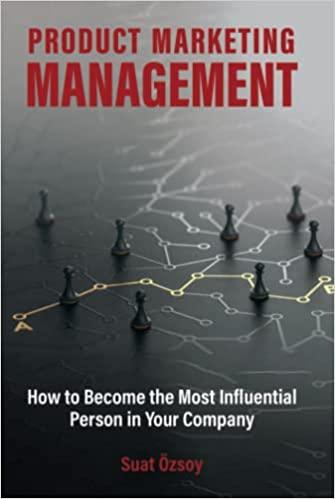Question
Hello! help me po I need script explanation of my topic in reporting in marketing management must be TAGALOG AND ENGLISH SCRIPT pls: NO TO
Hello! help me po I need script explanation of my topic in reporting in marketing management must be
TAGALOG AND ENGLISH SCRIPT
pls: NO TO GOOGLE TRANSLATE, PAKI EXPLAIN LANG NG MAAYOS YUNG TOPIC AND PAKI EMPHASIZE LANG, WAG RIN BASTA BASTANG TAGALUGIN LANG. MEDYO MAHABANG EXPLANATION RIN SANA SALAMAT.
PLEASE ADD (INTRO BEFORE PROCEED SA MISMONG TOPIC) TOPIC: Structural Influences on Organizational Buying
SLIDE 1:
Structural Influences on Organizational Buying
is a concept that refers to the external and internal factors that affect the decision-making process of an organization when it comes to purchasing goods and services. These factors include the size of the organization, its organizational structure, its culture, its environment, and the availability of resources.
SLIDE 2:
Size:The size of an organization can have a significant impact on the buying process. Large organizations typically have more resources and personnel to dedicate to the purchasing process, allowing them to make more informed decisions. This is because larger organizations typically have more financial resources, personnel, and access to information than smaller organizations. With more resources and personnel, large organizations can dedicate more time and energy to researching potential purchases, allowing them to make more informed decisions. Additionally, larger organizations typically have more established processes and procedures for the purchasing process, allowing them to make more efficient decisions.
SLIDE 3:
Organizational Structure:The organizational structure of an organization can also have an impact on the buying process. Organizations with a hierarchical structure may have more control over the purchasing process, while organizations with a flat structure may have less control. Organizations with a hierarchical structure typically have a designated individual or team responsible for the purchasing process. This individual or team is typically given more authority and autonomy when it comes to making purchasing decisions. On the other hand, organizations with a flat structure may have less control over the purchasing process, as decisions may be made by multiple individuals or teams.
SLIDE 4:
Culture:The culture of an organization can also have an effect on the buying process. Organizations with a culture of risk-taking may be more likely to take risks when making purchasing decisions, while organizations with a culture of caution may be more likely to take a more conservative approach. Organizations with a culture of risk-taking may be more likely to take risks when making purchasing decisions, as they may be more willing to take on the potential risks associated with purchasing a particular product or service. On the other hand, organizations with a culture of caution may be more likely to take a more conservative approach, as they may be more likely to consider the potential risks associated with a particular purchase.
SLIDE 5:
Environment:The environment in which an organization operates can also have an effect on the buying process. Organizations operating in a competitive environment may be more likely to take risks when making purchasing decisions, while organizations operating in a more stable environment may be more likely to take a more conservative approach. Organizations operating in a competitive environment may be more likely to take risks when making purchasing decisions, as they may be more likely to take advantage of opportunities that may arise due to their competitors' actions. On the other hand, organizations operating in a more stable environment may be more likely to take a more conservative approach, as they may be more likely to avoid taking risks that may lead to losses.
SLIDE 6:
Availability of Resources:The availability of resources can also have an effect on the buying process. Organizations with access to more resources may be able to make more informed decisions, while organizations with fewer resources may have to make decisions based on limited information. Organizations with access to more resources may be able to make more informed decisions, as they may be able to dedicate more time and energy to researching potential purchases. On the other hand, organizations with fewer resources may have to make decisions based on limited information, as they may not have the resources or personnel to dedicate to researching potential purchases.
Step by Step Solution
There are 3 Steps involved in it
Step: 1

Get Instant Access to Expert-Tailored Solutions
See step-by-step solutions with expert insights and AI powered tools for academic success
Step: 2

Step: 3

Ace Your Homework with AI
Get the answers you need in no time with our AI-driven, step-by-step assistance
Get Started


